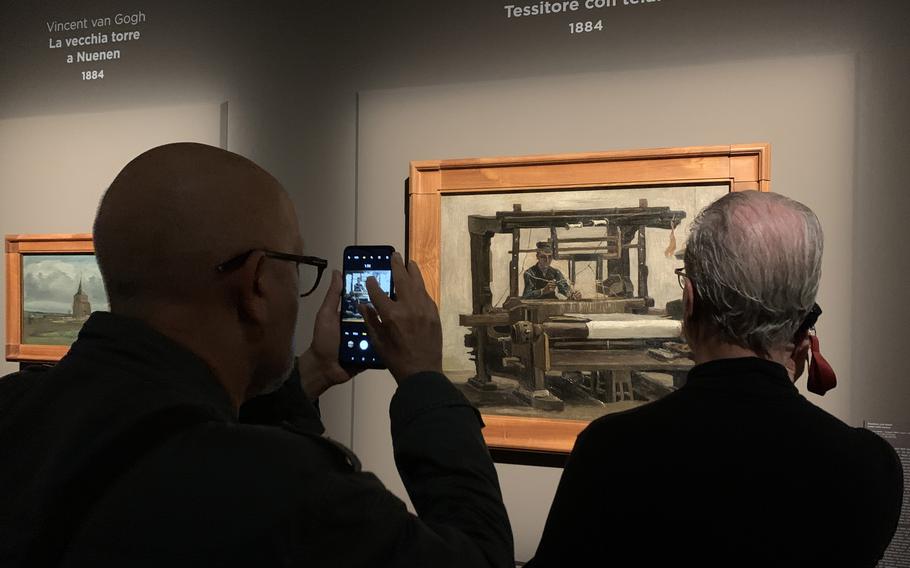
Many of Vincent Van Gogh's early works, such as the "Weaver," focused on the lives of peasants. The artist also was captivated by farmworkers and the land. (Alison Bath/Stars and Stripes)
Dutch post-Impressionist painter Vincent Van Gogh is best-known for works like “The Starry Night” or “Sunflowers,” but those dramatic, colorful paintings are only part of the troubled artist’s legacy.
A special exhibit at Rome’s Palazzo Bonaparte completes the picture with 50 paintings that span the body of his work, from an early focus on the toil of the laborers and farmworkers of his native Netherlands to the gaiety of Paris, stays in a French psychiatric hospital and a lauded self-portrait.
One of the world’s best-known artists, Van Gogh received little recognition for his work during his lifetime, ultimately selling only one painting during his short but prolific career.
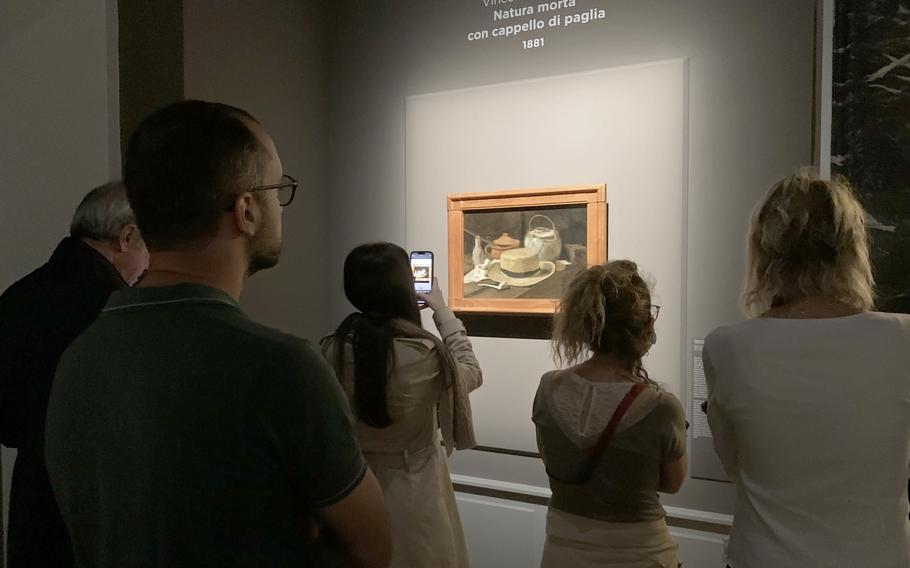
Among the early Vincent Van Gogh works showing at Palazzo Bonaparte in Rome is "Still Life with Straw Hat." The showing, which ends March 26, includes 50 of the Dutch post-impressionist artist's paintings and drawings. (Alison Bath/Stars and Stripes)
Over about 10 years, he produced more than 850 paintings and nearly 1,300 works on paper until his death by suicide at 37 in 1890, according to the Van Gogh Museum in Amsterdam.
A visit to the Bonaparte exhibition is an easy day trip by train from Naples’ central or Afragola stations. You can see the exhibit in a couple of hours and have plenty of time for lunch, shopping or sights and aperitivo.
After a major renovation, Bonaparte opened as a cultural hall in October hosting Van Gogh’s works as it first exhibit, according to the palace’s website.
Inside the building, visitors will find the exhibit divided into two galleries, the first detailing Van Gogh’s early works from about 1881. It is in this portion that viewers learn about the artist’s focus on the lives of working-class people, revealed in stark realism.
The paintings and drawings lack the bold use of bright color in Van Gogh’s later works. Instead, the artist uses darker tones to convey the hardship, worries and exhaustion of his subjects.
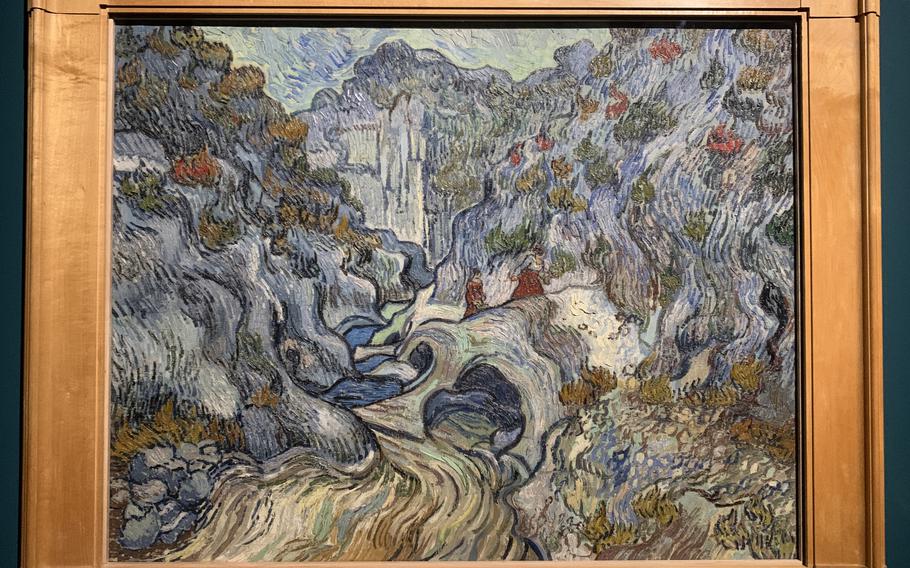
The exhibition at Palazzo Bonaparte features some of Vincent Van Gogh's paintings, such as "The Ravine," done during his stay at a French hospital due to depression. (Alison Bath/Stars and Stripes)
Among the more recognized paintings is “The Potato Eaters,” which depicts a peasant family at dinner. Visitors also will see “Still Life with Straw Hat,” “Weaver” and Van Gogh’s self-portrait painted in 1887, according to the exhibit.
With the accompanying audio, timelines, video and other multimedia in Italian and English, this first portion of the exhibit tells the story of Van Gogh’s decision to become an artist at age 27 and his early influences and focus.
One floor up, viewers can learn about Van Gogh’s study of color, his trips to and life in France and his struggles with mental illness. The artist’s focus on farmworkers and the land is evident in several works, including “The Sower.”
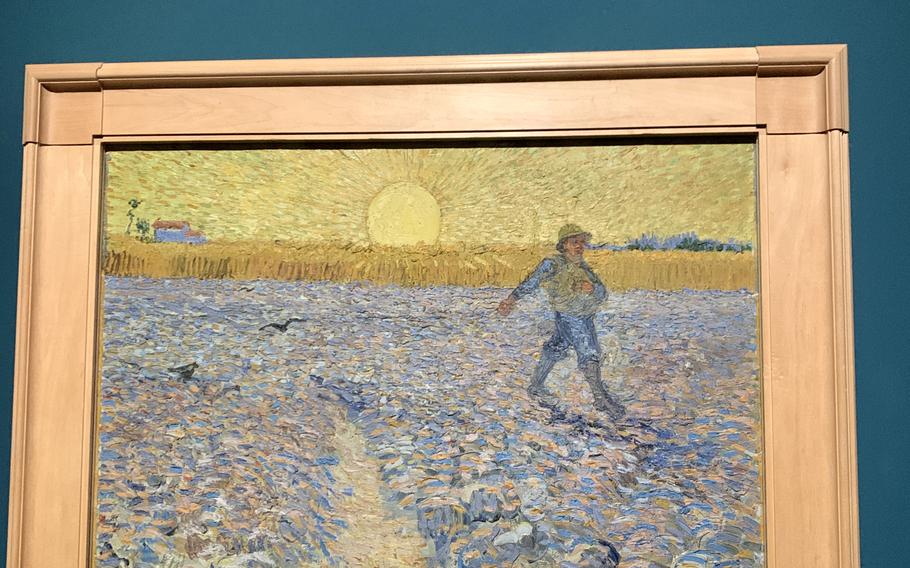
Vincent Van Gogh's "The Sower" is on display at Palazzo Bonaparte's exhibition of the artist's work in Rome, Saturday, Oct. 22, 2022. The painting recently was targeted by protesters who threw soup on it to protest climate change. (Alison Bath/Stars and Stripes)
Climate activists staging a recent protest threw soup on the painting, but it was not damaged.
This portion of the exhibit also includes several works created while Van Gogh was hospitalized with mental health issues from 1889 to 1890. Among them are “The Ravine” and “Pine Trees at Sunset,” which are striking in their use of color and hint at Van Gogh’s melancholia. Aside from Van Gogh’s honest, raw depictions of peasants, these are among some of the exhibit’s most mesmerizing, revealing paintings.
The exhibit ends with “At Eternity’s Gate,” the artist’s depiction of a sorrowful old man painted in 1890 when he was recovering from a deep depression.
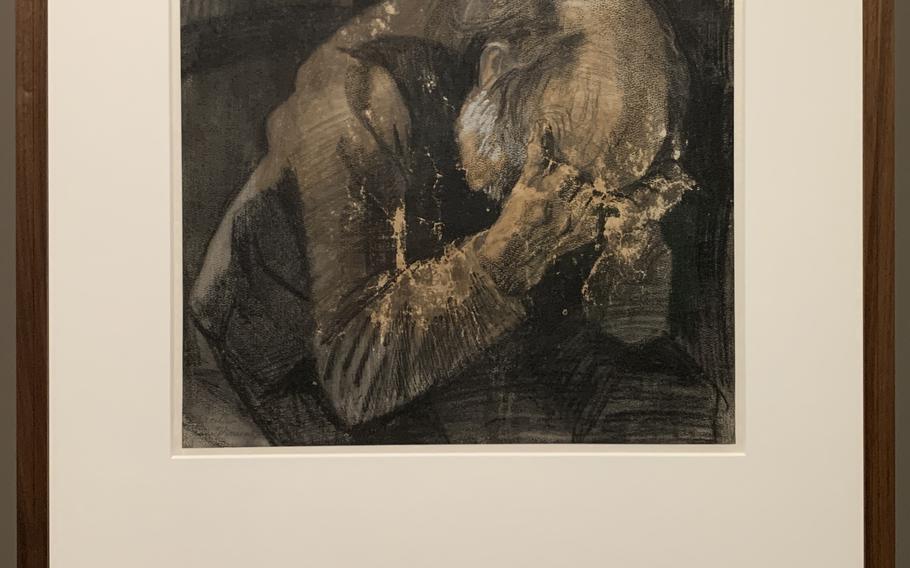
This early work of "At Eternity's Gate," is included in the exhibition of Vincent Van Gogh's work at Palazzo Bonaparte in Rome, Saturday, Oct. 22, 2022. A later painting of the same subject is among the final paintings shown. (Alison Bath/Stars and Stripes)
Not long afterward, the painter, worried about his financial future and unable to overcome his mental illness, walked into a wheat field on the northwestern outskirts of Paris and shot himself in the chest, according to his biography at the Van Gogh Museum. He died two days later, on July 29, 1890.
With its comprehensiveness, the exhibit reveals the purpose and perspective of Van Gogh’s work, broadening visitors’ familiarity with his repertoire and the degree to which it serves as a visible representation of the tormented mind hidden from view.
On loan from the Kroller Muller Museum in the Dutch city of Otterlo, the exhibit is showing through March 26.
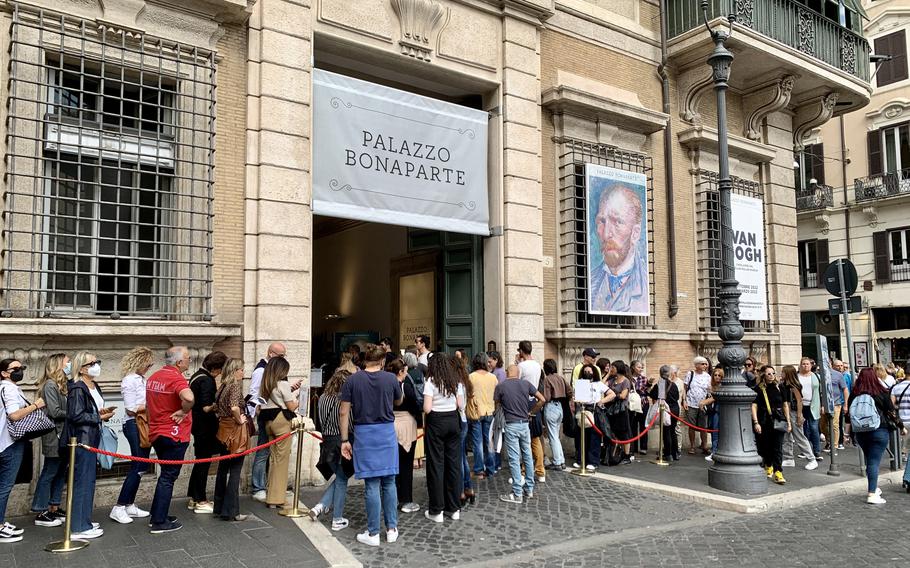
Rome's Palazzo Bonaparte is hosting an exhibition of 50 of Vincent Van Gogh's paintings. The exhibit features the troubled artist's work on loan from Kroeller Mueller Museum in Otterlo, Netherlands through March 26. (Alison Bath/Stars and Stripes)
Address: Piazza Venezia, 5, Rome. Just over an hour from Naples by train
Cost: 21 euros online at for adults, including an audio guide. Reduced rates are offered for children, senior citizens and students up to age 26. Tickets can be purchased at the palace for about 1.50 euros less, but there is the risk the exhibit will be sold out. While the museum offers a downloadable audio guide for use with a smartphone, cell service inside is spotty. Take the handheld audio guide.
Food: For some of Rome’s best cacio e pepe, try Roscioli Salumeria Con Cucina at Via dei Giubbonari, 21. It’s near Rome’s lively Campo de’ Fiori, just a 10-minute walk from the exhibit.
Hours: 9 a.m.-7 p.m., Monday-Friday; 9 a.m.-9p.m., Saturday-Sunday
Information: Online: mostrepalazzobonaparte.it